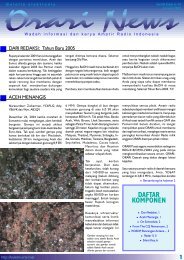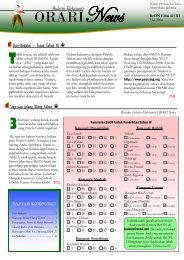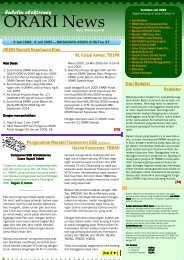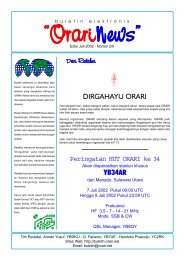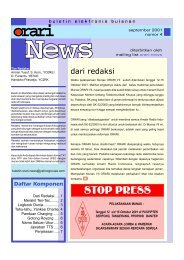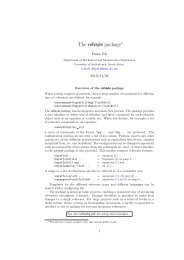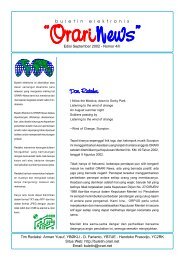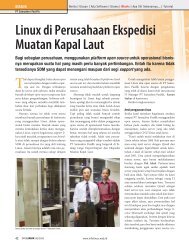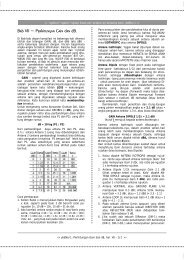You also want an ePaper? Increase the reach of your titles
YUMPU automatically turns print PDFs into web optimized ePapers that Google loves.
on the technical data sheet for the tube type under investigation.<br />
Next, a suitable “operating line” must be chosen on the constantcurrent<br />
curves for the tube type (plotted on the grid-voltage/anodevoltage<br />
coordinates).<br />
The computer, when properly placed over this operating line,<br />
permits one to obtain instantaneous values of the currents flowing<br />
at every 15° of the electrical cycle. The formulas given on the<br />
computer were derived by Chaffee 1 to give the various average<br />
and harmonic components of the resulting currents. Knowing these<br />
current component values and the radio-frequency voltage values<br />
which are determined through use of the computer, one can readily<br />
calculate the complete performance of the tube.<br />
The fundamental methods of making such computations, the<br />
considerations necessary to stay within the ratings of the tube<br />
types while accomplishing various forms of modulation have been<br />
covered in literature. 2 , 3, 4. 5, 6 T h e method used for harmonic<br />
amplifier service is approximate and should be used only for tetrode<br />
and pentode tubes, where the anode voltage has little effect on the<br />
amount of anode current flowing. A more exact method, showing<br />
that for harmonic operation, the operating line is a simple Lissajou<br />
figure, has been described by Brown.<br />
The results obtained by using the Performace Computer for poweramplifier<br />
service can be applied in combination with the other<br />
methods given in the literature to give good accuracy with simplified<br />
procedures. The resulting accuracy is well within the normal<br />
tolerances of tube characteristics due to the normal variation in<br />
manufacturing dimensions of a tube. Since the published curves<br />
are only typical of the characteristics to be expected of a particular<br />
tube type, the calculated performance will be well within the values<br />
obtained when different tubes of a given tube type are operated<br />
under the assumed conditions.<br />
1 E. L. Chaffeel ”A Simplified Harmonic Anaiysis,” Review - Sci. lnst. 7, October<br />
1936, p. 384.<br />
2 H. P. Thomas, “Determination of Grid Driving Power in Radio Frequency<br />
Power Amplifiers,” Proc. IRE, Vol. 21, Aug. 1933, pp. 1134-1141.<br />
3 W. G. Wagener, “Simplified Methods for Computing Performance of<br />
Transmitting <strong>Tube</strong>s,” Proc. IRE, January 1937.<br />
4 R. 1. Sarbacher, “Graphical Determination of PA Performance,” Electronics,<br />
December 1942.<br />
5 R. 1. Sarbacher, “Performance of Self Biased Modulated Amplifier,”<br />
Electronics, April 1943.<br />
6 Robert H. Brown, “Harmonic Amplifier Design,”Proc. IRE, Vol. 35, August<br />
1947, pp. 771 - 777.<br />
37




